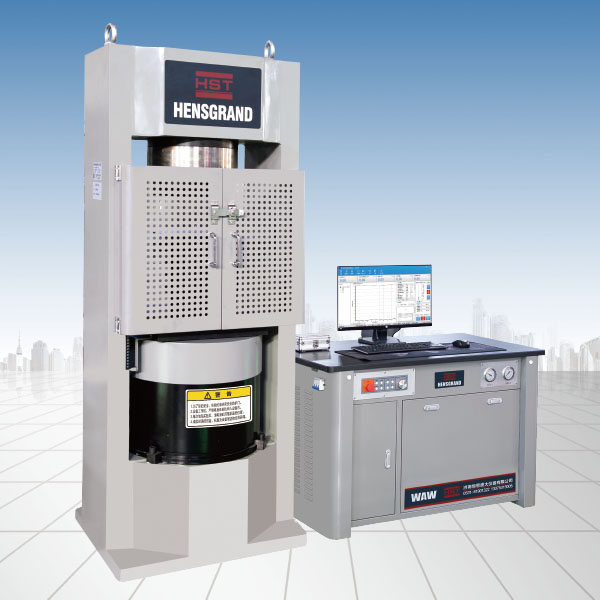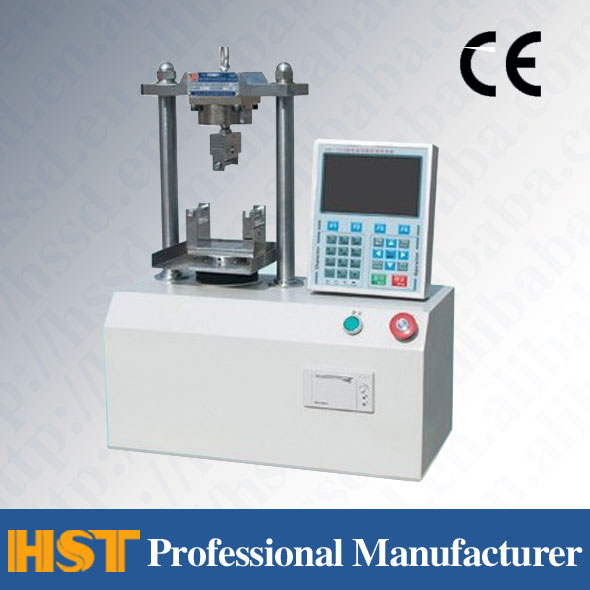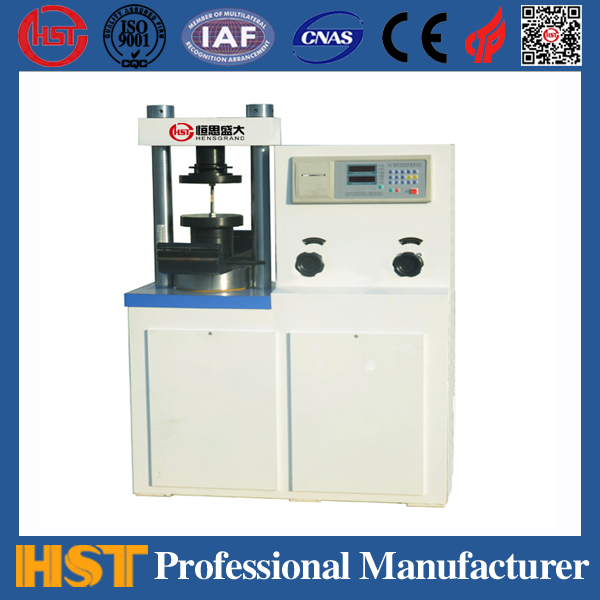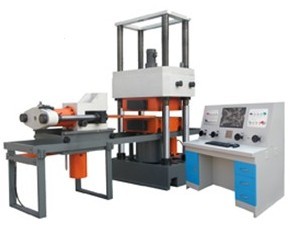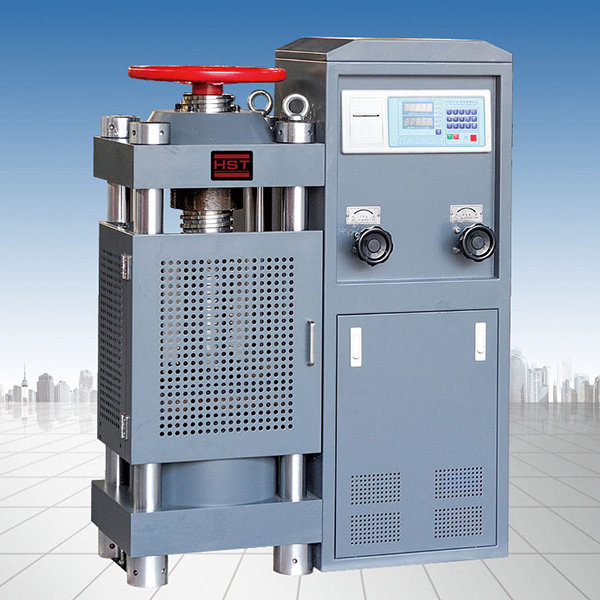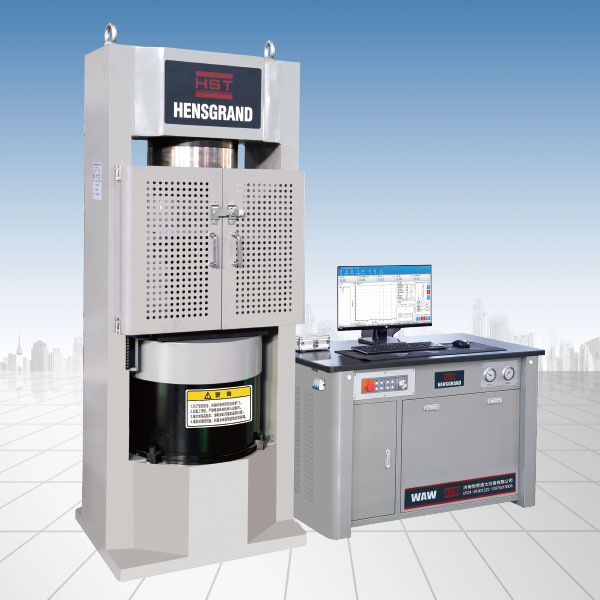Company News
Key points for purchasing plastic tension
Release time:2018-11-23 source:Jinan Hengsi Shanda Instrument Co., Ltd. Browse:
Tension machinePlastic splines can be stretched, bent, compressed or pierced at controlled speeds until they break. They are instruments commonly found in plastic compounding manufacturers' laboratories. These manufacturers use tensioners during the mixing development process to determine the suitability of the material to a certain process and end-use.
Tension machines are also increasingly common in the laboratories of plastic injection molding and extrusion operators. One reason is that they are increasingly used in cutting-edge product and process development. Another reason is that they conduct more stringent monitoring of the quality control of feed and finished products. Many OEM manufacturers, especially those in medical devices or automotive fields, require plastic processors to conduct their own tests at the end of production operations. Another reason for internal testing is to improve process control, which reduces scrap rates and achieves real returns.
Various tests
The tensioner consists of one (single arm) or two (door-type) vertical load columns mounted on a fixed horizontal substrate with a movable horizontal beam on top. In most tensile machines today, the struts are usually driven by lead screws to determine the position of the movable beam.
Tension machineThe specifications are expressed by the combination of the load that the frame can bear and the load of the load of the load unit. The load unit is mounted on a moving cross beam driven by motor or hydraulic pressure. The load bearing unit connected to the fixture measures the force and can be read from a digital display or on a computer. Many electronic tension testing machines have interchangeable sensors that can match the material to be tested.
In order to induce strain of the plastic, the electronic tensioner exerts a force on the sample. Special tests for tensile, bending, compression or shear are classified according to the direction of strain induced in the sample and the speed of force applied. Basic testing is completed by a standard electromechanical electronic tension testing machine. They are usually loaded in the speed range of 0.1mm/min to 500mm/min, and different materials require different test speeds. Dynamic and cyclic tests such as rupture growth and fatigue are generally completed over a long period of time and need to be completed on a servo hydraulic electronic tensioner with low loads.
Early electronic tension testing machines had pointers and chart recorders. They are now completely replaced by CNC and computer software. The new controller can automatically test and display the corresponding data. Even the stress and strain curve can be displayed instantly during the test. Reduced the workload of the experimenter's calculations.
The test of electronic tensile testing machines for plastics is still common in tensile strength and modulus, bending strength and modulus. For tensile tests specified in ASTMD638 and ISO527, both ends of the specimen are clamped. One fixture is fixed, the other is in the crossbeam, and it is removed from the fixture, pulling the sample until it breaks, and the crossbeam will automatically stop.
Place the sample on two supports on the fixed base of the tester for bending test (ASTMD790, D6272 and ISO178). For this test, the beam moves in the opposite direction to the tensile test, pushing rather than dragging the non-supported center of the specimen until it bends and has the potential to break. In China, because many thermoplastics will not break in this test, the bending stress when the deflection reaches 1.5 times the thickness needs to be calculated according to the standard test method. The commonly used bending deflection for 4mm thick specimens is 6mm.
How the specimens are kept at the bottom of the instrument is important because different types of tests require different fixtures. Replacing the fixture is not only difficult to maintain consistency in position (which often affects the test results), but also prone to touching the delicate part - the sensor, which is also a test of the strength of the experimenter, and many women find it difficult to complete this job. Moreover, the price of fixtures is several hundred yuan, and some hydraulically operated fixtures are as expensive as thousands of yuan. So, try to change the fixture as little as possible. Some electronic tensile testing machines, such as the LDX-300 universal material testing machine, are designed together with three-point bending fixtures and tensile fixtures, which reduces the process of replacing the fixtures.
Electromechanical electronic tensile testing machine
Commonly used electromechanical devices have load capacity ranging from tens to hundreds of thousands of Newtons. The larger the specification, the higher the cost. Whether it is single-column or door-type, the commonly used instrument for testing plastics is the vertical table top device. The same principle applies to horizontal instruments, which are mainly used in automated processes that continuously process samples are processed using robots. Vertical instruments take up less space and are easier to operate.
Single-column electronic tension testing machine has a lower degree of force and a lower cost. They have a load capacity of 5000 Newtons. The rack load capacity of the gantry electronic tensioner can reach 5000 to 1000,000 Newtons. The load unit is also classified for a certain force, which should be suitable for the electronic tensile tester frame and the sample. For example, a 100 Newton load unit placed in a 1000 Newton rack can be tested with a tensile force of up to 100 Newton. The capacity of the load unit should not exceed the estimated fracture load of the specimen, otherwise it will damage the measurement accuracy. By weight, you need to use a balance to test something that costs several grams, and you need to use a scale to test something that costs tens of kilograms. If you use a scale to test something that costs several grams, the error will be several times, and the meaning of the test will be lost.
The instrument that is commonly used in plastic testing is a single column electronic tensile tester with rack load capacity of 1000 to 5000 Newtons. For fill and reinforced plastics, instruments with rack load capacity of 20,000 Newtons are often required.
If the user wants to buy an instrument with a load capacity that is far beyond the needs, he will not only pay more cash and sacrifice some accuracy, but also spend some on testing time. Larger instruments run slower. For example, instruments with a rack load capacity of 5000 Newtons usually operate at a speed of 100 mm/min, while instruments with a 5000000 Newtons run at a speed of 20 mm/min.
Single-column or door-type?
The amount of load required depends on the type of material tested and is one of the important issues to consider when deciding whether to choose a single-column or a gantry. Also consider whether an environmental partition is needed to test at controlled temperatures. The door type is high, allowing larger samples and larger heating cabinets to be inserted between the pillars. If you will perform any compression test on the foam, as the specimens are often large, a portal device is generally required.
The gantry instrument is relatively hard, so the deflection is one-half of that of a single arm during the test. It's the difference in cost. The price of a single-column electronic tension testing machine may be only 20,000-30,000 yuan, while the price range of the door style is usually between 30,000 and 60,000 yuan. These prices are only for instruments. Computer-type requires computer costs, and fixtures are another separate cost, as is the same as installation and training. If a heating chamber with a special temperature is required, it is generally priced between 8,000 and 20,000 yuan.
Progress in software
The design of the tension machine in electromechanical aspects is relatively mature. The new development is in control software. Advanced computer software provides higher productivity and accuracy and is easier to use. These software adds a certain degree of repeatability, which has never been seen before.
For high-end users who engage in scientific research, they cannot just rely on readings at break points. Researchers can now discover what is happening through physical properties tests. Has the material elongated or deformed before breaking? Is its deformation proportional to stress? The answers can help them evaluate materials, determine safety margins, and better simulate terminal usage. For general businesses, this data is not needed.
The new computer software enables testing, data collection, analysis, report output, data storage and recovery to be automatically completed. The user can make the instrument run at a certain load rate, and the system will automatically adjust the speed of the beam.
The new software also allows users to obtain the true value of tension during the test through the position sensor, which accurately measures the distance the beam has moved. Dividing the change in the length of the sample by its original length results in an automatic strain result. The new software can also realize automatic verification and calibration of the load unit when replacing the sensor. It "reads" the electronics on the load unit and establishes parameters, no longer requires mechanical corrections previously completed by the operator.
Newer software with faster data acquisition can more accurately obtain load peaks and check tensile/strain curves in more detail at higher speeds or when load fluctuates. Typical data acquisition speeds are about 50Hz, (50 readings per second), although the sampling speed can reach 5kHz.
DrivenTension machineCheaper than instruments with digital control panels that have been used for over 10 years. New computer styles have simpler controls and often do not use digital displays with graphical readings. Electronic tensioners based on microcomputers now drive the entire operation because they do not use digital displays and some electronic components, thus reducing the cost.
- Previous article:Tension testing machine is used in metal wire
- Next article:Briefly describe the impact strength test method
Recommended productsPRODUCTS


















